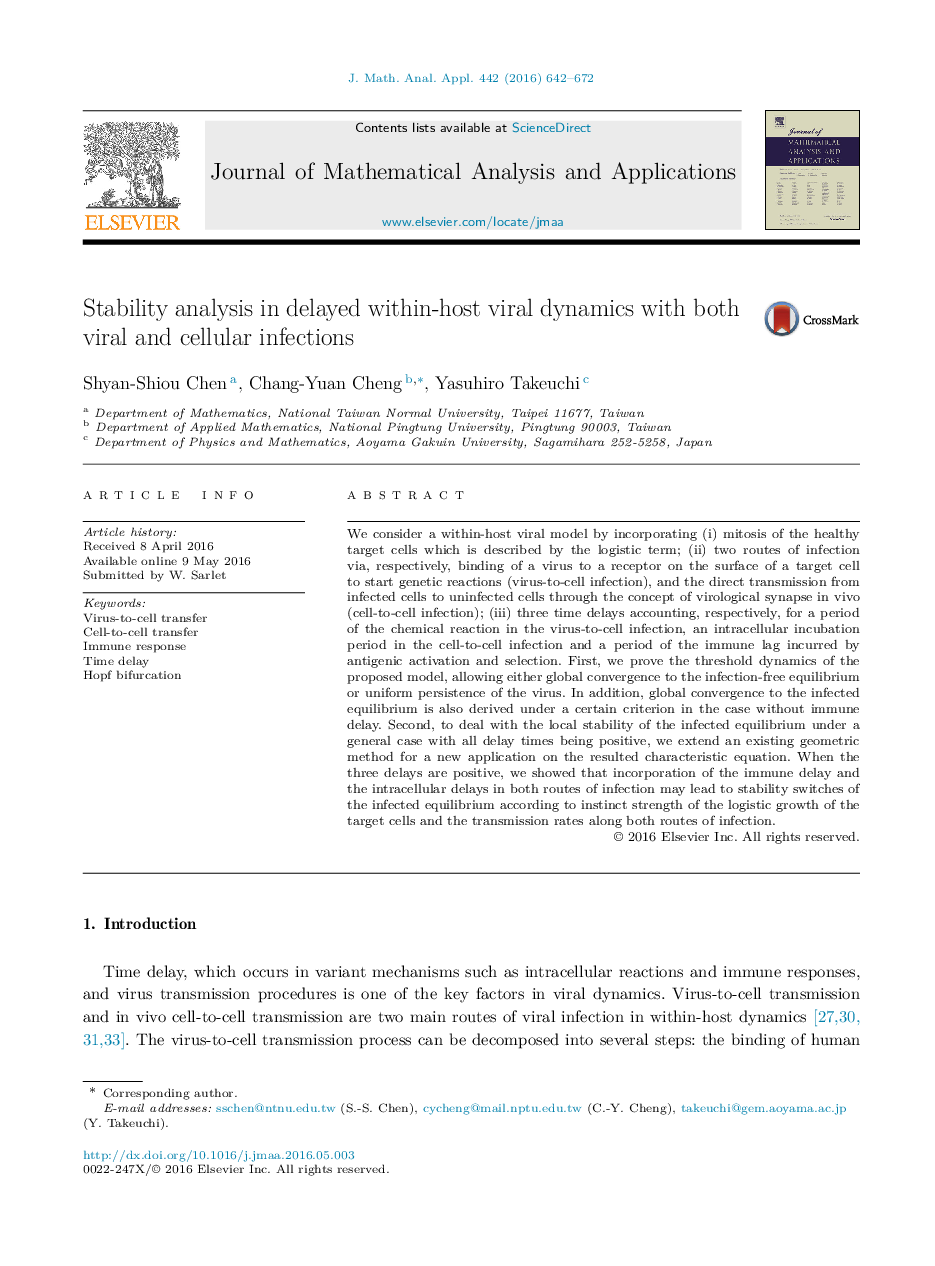| Article ID | Journal | Published Year | Pages | File Type |
|---|---|---|---|---|
| 4614023 | Journal of Mathematical Analysis and Applications | 2016 | 31 Pages |
We consider a within-host viral model by incorporating (i) mitosis of the healthy target cells which is described by the logistic term; (ii) two routes of infection via, respectively, binding of a virus to a receptor on the surface of a target cell to start genetic reactions (virus-to-cell infection), and the direct transmission from infected cells to uninfected cells through the concept of virological synapse in vivo (cell-to-cell infection); (iii) three time delays accounting, respectively, for a period of the chemical reaction in the virus-to-cell infection, an intracellular incubation period in the cell-to-cell infection and a period of the immune lag incurred by antigenic activation and selection. First, we prove the threshold dynamics of the proposed model, allowing either global convergence to the infection-free equilibrium or uniform persistence of the virus. In addition, global convergence to the infected equilibrium is also derived under a certain criterion in the case without immune delay. Second, to deal with the local stability of the infected equilibrium under a general case with all delay times being positive, we extend an existing geometric method for a new application on the resulted characteristic equation. When the three delays are positive, we showed that incorporation of the immune delay and the intracellular delays in both routes of infection may lead to stability switches of the infected equilibrium according to instinct strength of the logistic growth of the target cells and the transmission rates along both routes of infection.
